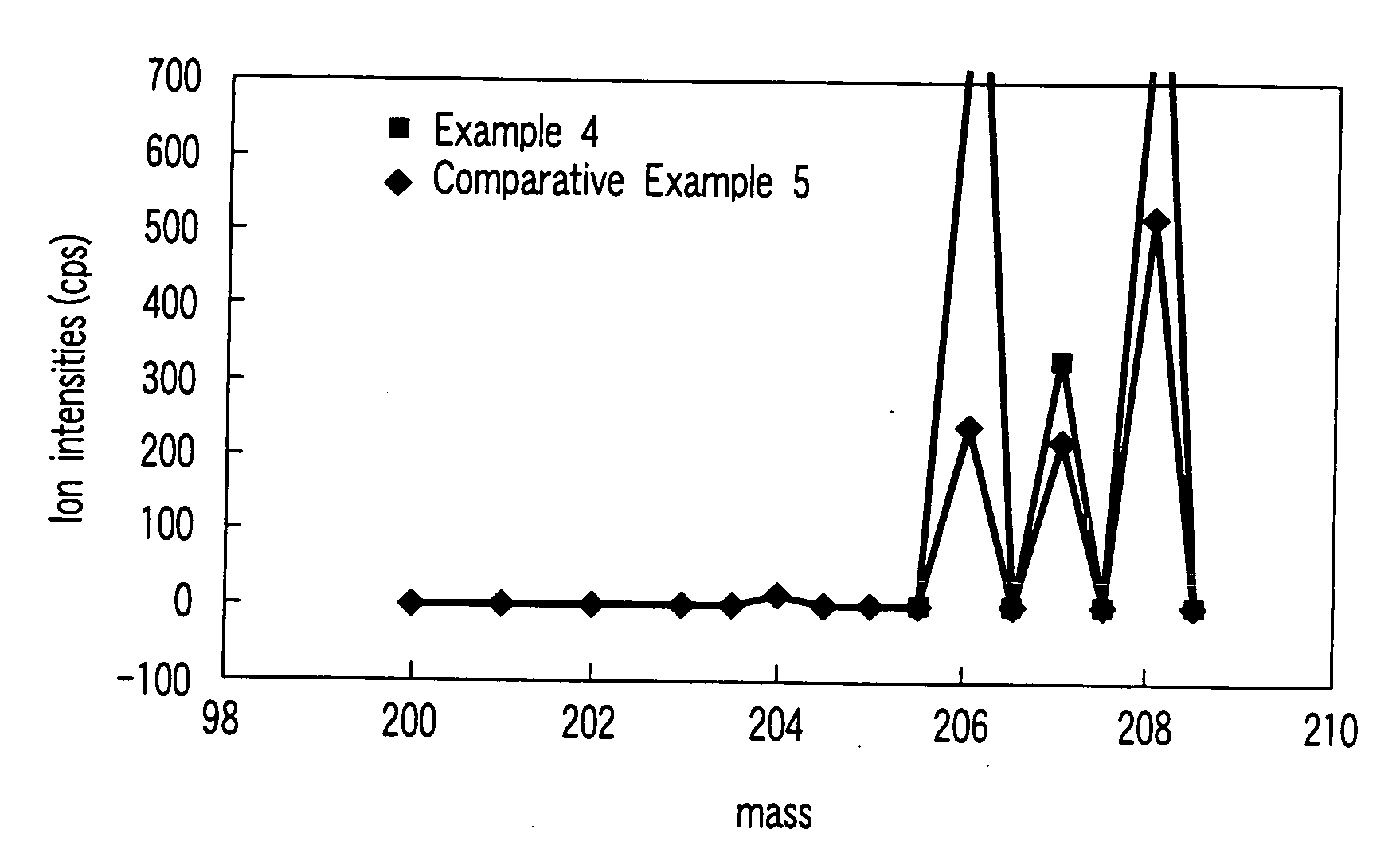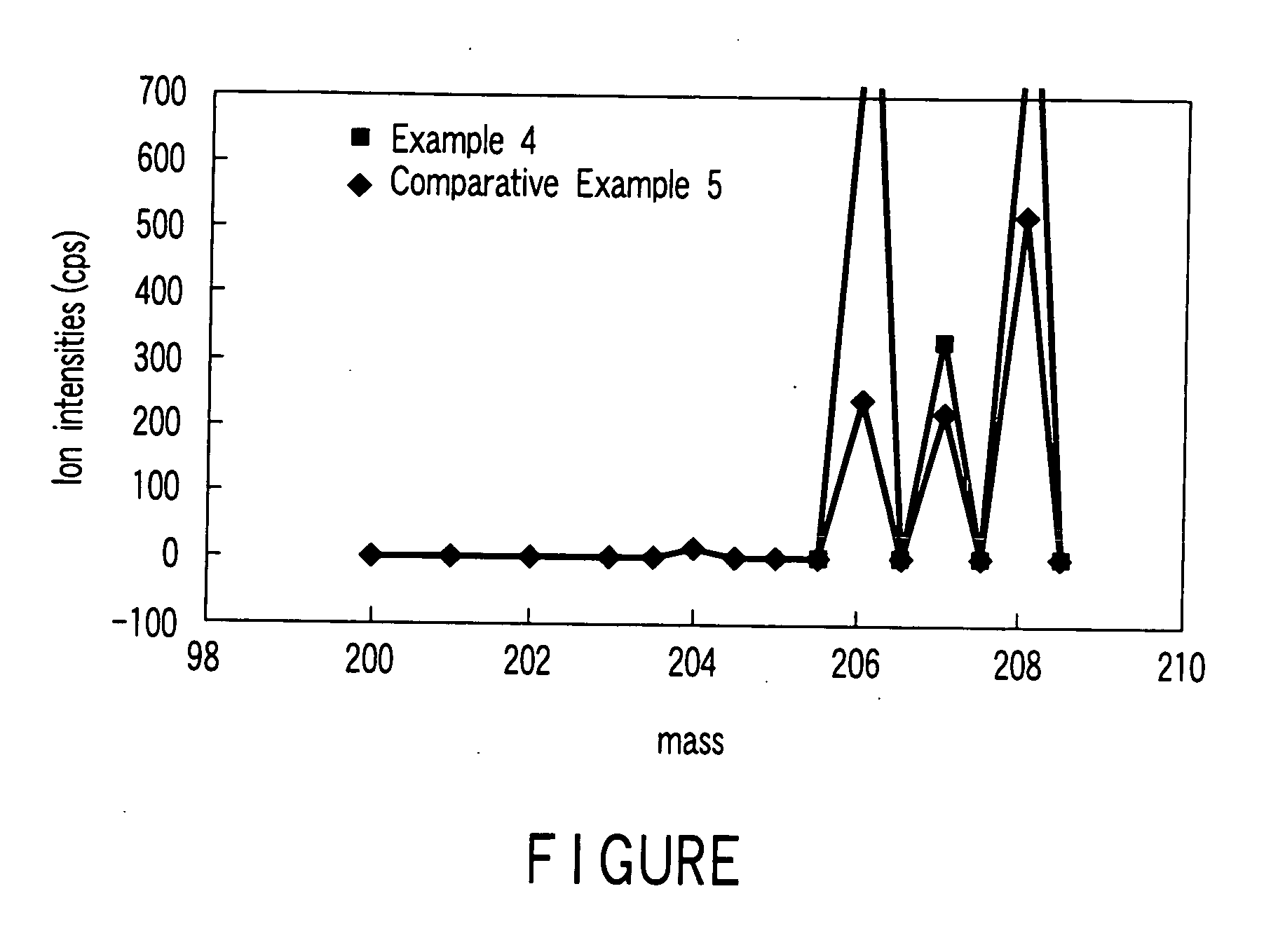Method for quantitative analysis of metal element contained in resin material
a metal element and resin material technology, applied in the field of metal element quantitative analysis, can solve the problems of inefficient methods, inability to accurately measure the value, and the tendency of pb or cd to be los
- Summary
- Abstract
- Description
- Claims
- Application Information
AI Technical Summary
Benefits of technology
Problems solved by technology
Method used
Image
Examples
example 1
[0053] Prepared as a sample was a European polyethylene standard substance (BCR-680, BCR 681) the measured value of which is guaranteed.
[0054] 0.2 g of the sample was housed in a cylindrical container having the bottom and made of a glassy carbon having 1 μm of the center line average roughness Ra on the inner surface. The center line average roughness Ra was measured by using “Talysurf 5” (trade name of a surface roughness meter manufactured by Taylor Hobson Inc. Then, 5 mL of an aqueous solution of nitric acid having a concentration of 30% by weight and 5 mL of an aqueous solution of sulfuric acid having a concentration of 30% by weight were put in the container, followed by putting the container on a hot plate and heating the container at 150° C. so as to decompose the sample (standard substance made of polyethylene). Further, the container made of the glassy carbon was set within a muffle furnace, and the sample was carbonized at 450° C. so as to remove sulfuric acid, nitric ac...
example 2
[0061] Prepared were three kinds of cylindrical containers each having the bottom and made of a glassy carbon. These containers differed from each other in the center line average roughness (Ra) of the glassy carbon on the inner surface. Specifically, the center line average roughness (Ra) of the glassy carbon on the inner surface, which was measured by a surface roughness meter “Talysurf 5” manufactured by Taylor Hobson Inc. was 1,000 μm, 100 μm or 10 μm. The container had an inner diameter of 70 mm and a height of 80 mm. Then, 10 mL of an aqueous solution of sulfuric acid having a concentration of 30% by weight was housed in each of these containers. Further, each of these containers was set in a muffle furnace and heated stepwise to 400° C., 450° C., 500° C., 550° C. and then to 600° C. so as to measure the center line average surface roughness Ra on the inner surface of the container at each of the heated temperatures by using the surface roughness meter noted above. Table 2 sho...
PUM
| Property | Measurement | Unit |
|---|---|---|
| surface roughness | aaaaa | aaaaa |
| surface roughness | aaaaa | aaaaa |
| thickness | aaaaa | aaaaa |
Abstract
Description
Claims
Application Information
 Login to View More
Login to View More - R&D
- Intellectual Property
- Life Sciences
- Materials
- Tech Scout
- Unparalleled Data Quality
- Higher Quality Content
- 60% Fewer Hallucinations
Browse by: Latest US Patents, China's latest patents, Technical Efficacy Thesaurus, Application Domain, Technology Topic, Popular Technical Reports.
© 2025 PatSnap. All rights reserved.Legal|Privacy policy|Modern Slavery Act Transparency Statement|Sitemap|About US| Contact US: help@patsnap.com


